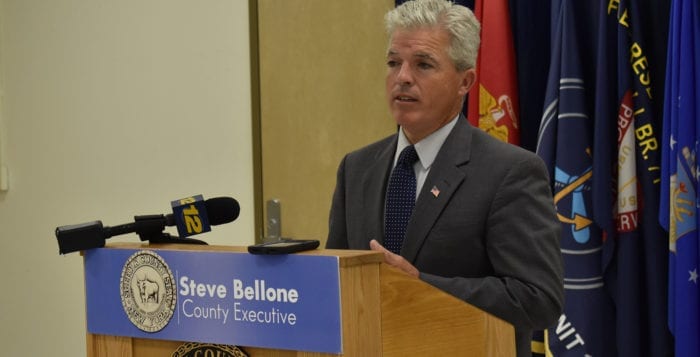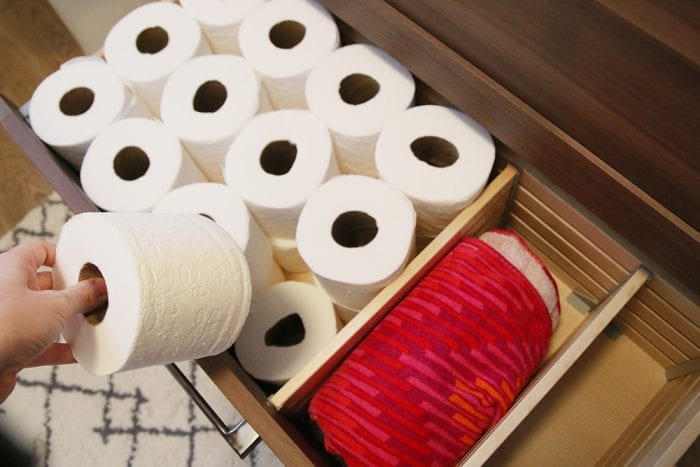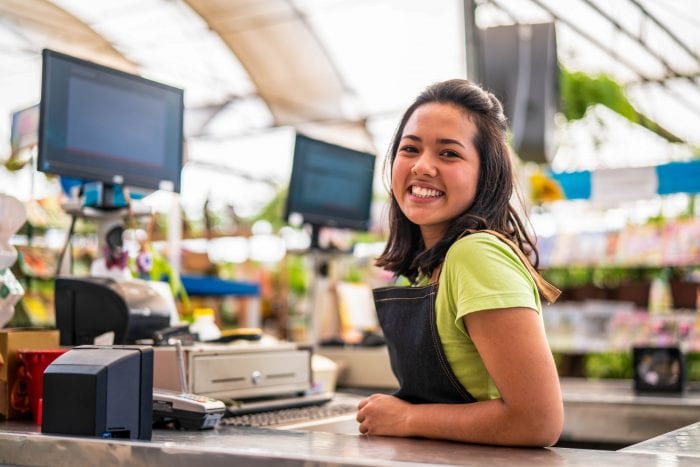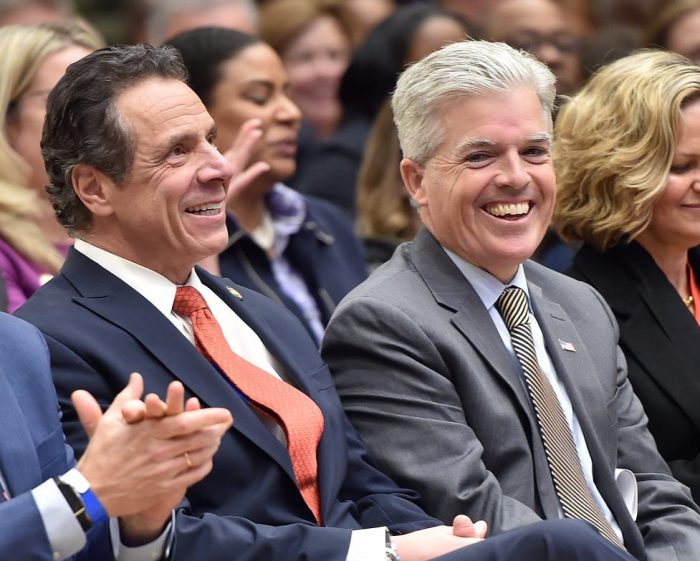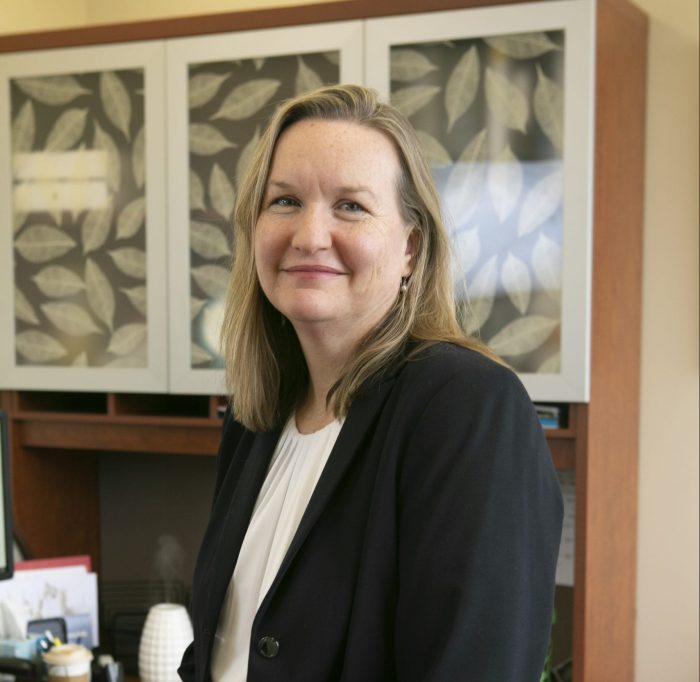Three Village residents, business owners and community leaders are finding ways to deal with the COVID-19 pandemic.
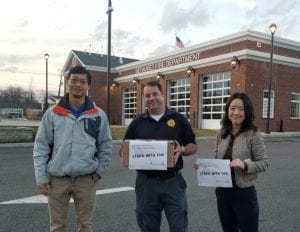
While Stony Brook University was chosen by Gov. Andrew Cuomo (D) for a drive-through testing center for the virus, along with an external facility for extra beds at the campus, other help has been provided in the area.
The Three Village Civic Association has been emailing members with any updates it receives to ensure residents are informed. In a March 23 email to members, civic association President Jonathan Kornreich wrote of “countless acts of kindness and compassion, large and small” in the community.
Among those acts have been the Della Pietra family creating a community challenge to raise $500,000 for Stony Brook University Hospital. According to SBU’s website, the family is pledging a $250,000 dollar-for-dollar match. The funds raised will go toward critical supplies and treatments at the hospital. At press time, the challenge had nearly 650 supporters donating more than $330,000.
Kornreich said in the email he also noticed residents doing good things in small ways.
“Even in supermarkets I’ve seen people sharing and taking a moment to show some kindness to stressed-out neighbors,” he said.
The civic association also announced that the Three Village Central School District consolidated its food pantries into one location at the North Country Administration Center in Stony Brook. Those who need to access the pantry, or would like to donate, can call Anita Garcia at 631-730-4010. As always, nonperishables and toiletries will be accepted, and gift cards for supermarkets and gas stations are also needed. Civic association volunteers picked up bags of donated items for the food pantry March 25 from residents and have pledged to do so as long as necessary.
Extra steps to help out SFD
The Long Island Chinese American Association donated 120 KN95 masks to the Setauket Fire District last week.
In a March 16 Facebook message, the fire department asked residents to let dispatchers know if there is anyone in their home who is under quarantine when calling to report a house fire. The information will allow responders to ensure they have the proper protective equipment.
Dave Sterne, district manager of the Setauket Fire District, said first responders are in the same position as the health care industry when it comes to the shortage of personal protective equipment.
“We are in unprecedented times with the way we are using and reusing all types of PPE and any donations we receive are very much appreciated,” he said.
Sterne said the district was grateful for the Long Island Chinese American Association’s donation as well as some masks from resident Mark Andrews.
Emma Clark library stays connected with community
While Emma S. Clark Memorial Library is closed until further notice due the ongoing pandemic, it still has numerous services to offer the community. The library announced in a press release Monday it will offer remote technology help for patrons who need to set up communication options like FaceTime, Zoom and Google Hangouts. They can also help remotely with office applications, web browsers, Roku and Fire Stick devices and with general support with mobile devices, phones, tablets and laptops.
Cardholders can send an email to [email protected] and include their library barcode number and phone number. A library employee will call back to schedule one-on-one telephone help.
For those who don’t have a library card, the library is also providing temporary digital cards that will allow them to access some of Emma Clark’s online resources including OverDrive and Hoopla for eBooks, eAudiobooks, movies and music. Also, temporary digital cardholders will be able to access databases and the classes in Learning Express. People can go to www.emmaclark.org and find “Get a Library Card” at the bottom of the page to sign up.
Library director, Ted Gutmann, said in an email it’s important for the library to stay in touch with the community.
“A big part of what the library does at all time is connect people with information, with resources, with help, with each other,” he said. “Our virtual time with a tech service is just one example of how the library is reaching out to the community in this period of social distancing, when it’s so easy to feel disconnected and unsure about things. We’re asking our patrons to come to us like they always have. It may not be face-to-face, but it’s still person-to-person.”
The director added when residents use the library’s Time with a Tech service they will be speaking with the library’s technology librarian or IT manager, or “real people, real voices — not some anonymous ‘someone will get back to you.’ I think this is reassuring, and I hope many of our patrons will feel that way too.”
Businesses adapt to new climate
Many business owners are coming up with new ideas in order to stay open. One option many dance schools and martial arts studios have taken is creating videos and making them available online for their students.
Nick Panebianco from Alchemy Martial Arts and Fitness of East Setauket last week spent two days working practically nonstop creating 40 videos to put on his school’s website. He said it was something he was thinking about for a couple of months but didn’t get a chance to do, and he knew now was the time to create the online lessons.
The studio owner said during the pandemic he knows children will be spending more time with their families. In the videos, he shows parents how to use everyday items such as oven mitts and pillows to help with a student’s practice.
“I basically teach the parents how to teach the kids,” he said.
Panebianco added that he goes over drills that he normally does in classes and points out ways to adapt to different body types. At press time, he already had 50 subscribers made up of current and former students. He has extended the invitation to watch the videos to community members too. The service is free and can be accessed by going to the studio’s website and signing up.
“It’s pretty cool so far,” he said. “People are sending me videos of their kids working with them. I’m very excited right now. I want to keep adding to it.”
With students currently out of class, he said he feels it’s important to keep them active instead of looking at their mobile devices all day, adding that the videos can also be helpful in general for those who can’t afford or don’t have time to do a full class at the martial arts studio.
As for the Three Village community, the Port Jefferson Station resident said he’s seen many businesses coming up with creative ideas.
“People are adapting fast,” he said. “It’s pretty impressive.”
Lisa Cusumano, co-owner and general manager of Pentimento restaurant in Stony Brook Village Center said even though the restaurant had to lay off most of its staff, they are still providing curbside pickup and delivery to those who are homebound.
Cusumano said they are also offering 50 percent off meals for all hospital and EMT workers in the Three Village area who show an ID as they realize these community members are on the front lines fighting the pandemic.
“We’re trying to do anything to help,”
she said.
Cusumano said when she first heard of the coronavirus she bought more cleaning supplies than usual, and the staff cleaned more regularly than average starting weeks ago, even wiping menus after each use.
She said the restaurant, which has been in business for 26 years, is taking it day by day and as long as they have the ability to open they will.
“As long as we have products and people working, we’ll take care of the community as best as we can,” Cusumano said.
We would love to hear about what readers are seeing in our community. Let us know about residents or business owners who are dealing with COVID-19 pandemic in innovative ways or helping out their neighbors by emailing rita@tbrnewsmedia.

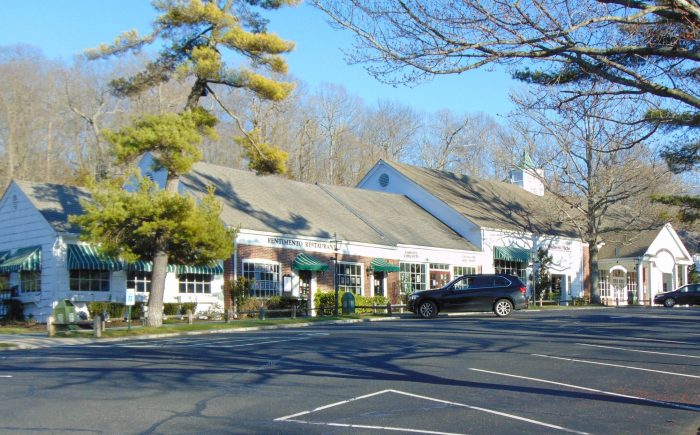




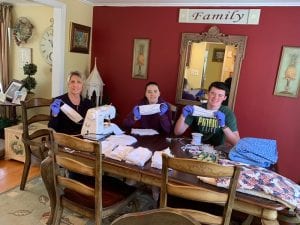
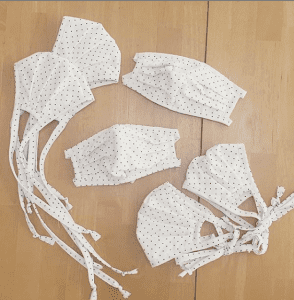

 A resident of Setauket, John Turner is conservation chair of the Four Harbors Audubon Society, author of “Exploring the Other Island: A Seasonal Nature Guide to Long Island” and president of Alula Birding & Natural History Tours.
A resident of Setauket, John Turner is conservation chair of the Four Harbors Audubon Society, author of “Exploring the Other Island: A Seasonal Nature Guide to Long Island” and president of Alula Birding & Natural History Tours.